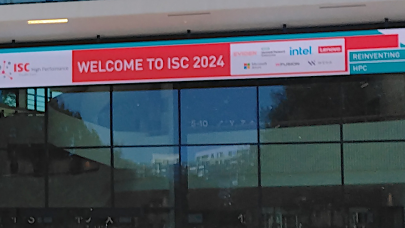NEEDHAM, Mass., July 5, 2023 — According to the International Data Corporation (IDC) Worldwide Quarterly Enterprise Infrastructure Tracker: Buyer and Cloud Deployment, spending on compute and storage infrastructure products for cloud deployments, including dedicated and shared IT environments, increased 14.9% year over year in the first quarter of 2023 (1Q23) to $21.5 billion. Spending on cloud infrastructure continues to outpace the non-cloud segment with the latter declining 0.9% in 1Q23 to $13.8 billion. The cloud infrastructure segment saw unit demand down 11.4%, but average selling prices (ASPs) grew 29.7%, driven by inflationary pressure as well as a higher concentration of GPU-accelerated systems being deployed by cloud service providers.
 Spending on shared cloud infrastructure reached $15.7 billion in the quarter, increasing 22.5% compared to a year ago. IDC expects to see continuous strong demand for shared cloud infrastructure, which is expected to surpass non-cloud infrastructure in spending in 2023. The dedicated cloud infrastructure segment declined 1.5% year over year in 1Q23 to $5.8 billion. Of the total dedicated cloud infrastructure, 44.5% was deployed on customer premises during the quarter.
Spending on shared cloud infrastructure reached $15.7 billion in the quarter, increasing 22.5% compared to a year ago. IDC expects to see continuous strong demand for shared cloud infrastructure, which is expected to surpass non-cloud infrastructure in spending in 2023. The dedicated cloud infrastructure segment declined 1.5% year over year in 1Q23 to $5.8 billion. Of the total dedicated cloud infrastructure, 44.5% was deployed on customer premises during the quarter.
For 2023, IDC forecasts cloud infrastructure spending to grow 7.3% compared to 2022 to $96.4 billion – a slight improvement from the prior outlook for the year of 6.9%. Non-cloud infrastructure is expected to decline 6.3% to $60.4 billion. Shared cloud infrastructure is expected to grow 8.4% year over year to $68.0 billion for the full year, while spending on dedicated cloud infrastructure is expected to grow 4.8% to $28.4 billion for the full year. The subdued growth forecast reflects the expectation that the market will face significant macroeconomic headwinds and curbed demand with cloud staying positive due to the drive for modernization, opex focus, and continued growth in digital consumer services demand, while non-cloud contracts as enterprise customers shift towards capital preservation.
“Cloud infrastructure spending remains resilient in the face of macroeconomic challenges,” said Kuba Stolarski, research vice president for IDC’s Infrastructure Systems, Platforms, and Technologies Group. “However, the segment is grappling with substantial price hikes and Q1 marked the second consecutive quarter of declining system unit demand. Although the overall outlook for the year remains positive, its growth hinges on the expectation that volume will drive it. Prolonged stagnation in demand could pose a significant obstacle to growth for the remainder of this year.”
IDC tracks various categories of service providers and how much compute and storage infrastructure these service providers purchase, including both cloud and non-cloud infrastructure. The service provider category includes cloud service providers, digital service providers, communications service providers, and managed service providers. In 1Q23, service providers as a group spent $21.5 billion on compute and storage infrastructure, up 14.6% from the prior year. This spending accounted for 60.8% of the total market. Non-service providers (e.g., enterprises, government, etc.) decreased their spending 0.5% year over year. IDC expects compute and storage spending by service providers to reach $94.5 billion in 2023, growing at 5.6% year over year.
On a geographic basis, year-over-year spending on cloud infrastructure in 1Q23 increased in all regions except Central & Eastern Europe (CEE) (impacted by the Russia-Ukraine war), China, and Canada. Spending in CEE declined 27.1% year over year, while China was down 20.4%, and Canada declined 4.9%. Latin America, the United States, the Middle East & Africa (MEA), Japan, and Asia/Pacific (excluding Japan and China) (APeJC) grew the most at 39.2%, 34.3%, 33.5%, 17.1% and 16.4% year over year, respectively. Western Europe grew at 7.4% year over year. For 2023, cloud infrastructure spending is expected to grow in all regions except CEE and Canada, with Latin America expected to grow fastest at 16.1%. All other regions (APeJC, Canada, Japan, Latin America, USA, and Western Europe) are expected to post annual growth in the 0-15% range.
Long term, IDC predicts spending on cloud infrastructure to have a compound annual growth rate (CAGR) of 11.2% over the 2022-2027 forecast period, reaching $153.0 billion in 2027 and accounting for 69.0% of total compute and storage infrastructure spend. Shared cloud infrastructure will account for 72.0% of the total cloud amount with an 11.9% CAGR and reaching $110.1 billion in 2027. Spending on dedicated cloud infrastructure will grow at a CAGR of 9.6% to $42.9 billion. Spending on non-cloud infrastructure will grow at a 1.3% CAGR, reaching $68.6 billion in 2027. Spending by service providers on compute and storage infrastructure is expected to grow at a 10.6% CAGR, reaching $148.2 billion in 2027.
IDC’s Worldwide Quarterly Enterprise Infrastructure Tracker: Buyer and Cloud Deployment is designed to provide clients with a better understanding of what portion of the compute and storage hardware markets are being deployed in cloud environments. The Tracker breaks out each vendors’ revenue into shared and dedicated cloud environments for historical data and provides a five-year forecast. This Tracker is part of the Worldwide Quarterly Enterprise Infrastructure Tracker, which provides a holistic total addressable market view of the four key enabling infrastructure technologies for the datacenter (servers, external enterprise storage systems, and purpose-built appliances: HCI and PBBA).
Taxonomy Notes
IDC defines cloud services more formally through a checklist of key attributes that an offering must manifest to end users of the service.
Shared cloud services are shared among unrelated enterprises and consumers; open to a largely unrestricted universe of potential users; and designed for a market, not a single enterprise. The shared cloud market includes a variety of services designed to extend or, in some cases, replace IT infrastructure deployed in corporate datacenters; these services in total are called public cloud services. The shared cloud market also includes digital services such as media/content distribution, sharing and search, social media, and e-commerce.
Dedicated cloud services are shared within a single enterprise or an extended enterprise with restrictions on access and level of resource dedication and defined/controlled by the enterprise (and beyond the control available in public cloud offerings); can be onsite or offsite; and can be managed by a third-party or in-house staff. In dedicated cloud that is managed by in-house staff, “vendors (cloud service providers)” are equivalent to the IT departments/shared service departments within enterprises/groups. In this utilization model, where standardized services are jointly used within the enterprise/group, business departments, offices, and employees are the “service users.”
For more information about IDC’s Quarterly Cloud IT Infrastructure Tracker, please contact Lidice Fernandez at [email protected].
About IDC Trackers
IDC Tracker products provide accurate and timely market size, vendor share, and forecasts for hundreds of technology markets from more than 100 countries around the globe. Using proprietary tools and research processes, IDC’s Trackers are updated on a semiannual, quarterly, and monthly basis. Tracker results are delivered to clients in user-friendly Excel deliverables and on-line query tools.
Click here to learn about IDC’s full suite of data products and how you can leverage them to grow your business.
About IDC
International Data Corporation (IDC) is the premier global provider of market intelligence, advisory services, and events for the information technology, telecommunications, and consumer technology markets. With more than 1,300 analysts worldwide, IDC offers global, regional, and local expertise on technology, IT benchmarking and sourcing, and industry opportunities and trends in over 110 countries. IDC’s analysis and insight helps IT professionals, business executives, and the investment community to make fact-based technology decisions and to achieve their key business objectives. Founded in 1964, IDC is a wholly owned subsidiary of International Data Group (IDG), the world’s leading tech media, data, and marketing services company.
Source: IDC

























































